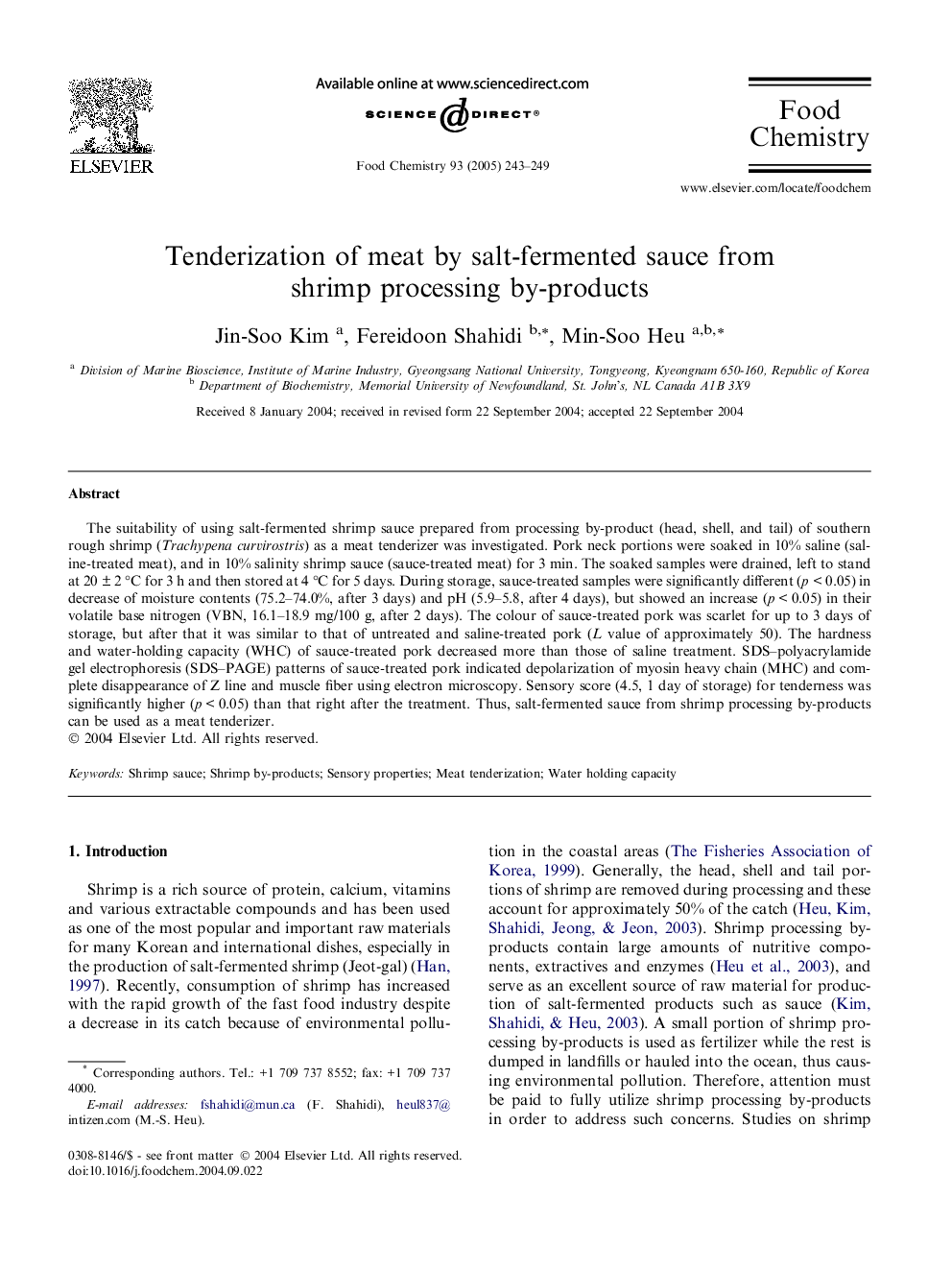| Article ID | Journal | Published Year | Pages | File Type |
|---|---|---|---|---|
| 10545069 | Food Chemistry | 2005 | 7 Pages |
Abstract
The suitability of using salt-fermented shrimp sauce prepared from processing by-product (head, shell, and tail) of southern rough shrimp (Trachypena curvirostris) as a meat tenderizer was investigated. Pork neck portions were soaked in 10% saline (saline-treated meat), and in 10% salinity shrimp sauce (sauce-treated meat) for 3 min. The soaked samples were drained, left to stand at 20 ± 2 °C for 3 h and then stored at 4 °C for 5 days. During storage, sauce-treated samples were significantly different (p < 0.05) in decrease of moisture contents (75.2-74.0%, after 3 days) and pH (5.9-5.8, after 4 days), but showed an increase (p < 0.05) in their volatile base nitrogen (VBN, 16.1-18.9 mg/100 g, after 2 days). The colour of sauce-treated pork was scarlet for up to 3 days of storage, but after that it was similar to that of untreated and saline-treated pork (L value of approximately 50). The hardness and water-holding capacity (WHC) of sauce-treated pork decreased more than those of saline treatment. SDS-polyacrylamide gel electrophoresis (SDS-PAGE) patterns of sauce-treated pork indicated depolarization of myosin heavy chain (MHC) and complete disappearance of Z line and muscle fiber using electron microscopy. Sensory score (4.5, 1 day of storage) for tenderness was significantly higher (p < 0.05) than that right after the treatment. Thus, salt-fermented sauce from shrimp processing by-products can be used as a meat tenderizer.
Related Topics
Physical Sciences and Engineering
Chemistry
Analytical Chemistry
Authors
Jin-Soo Kim, Fereidoon Shahidi, Min-Soo Heu,
